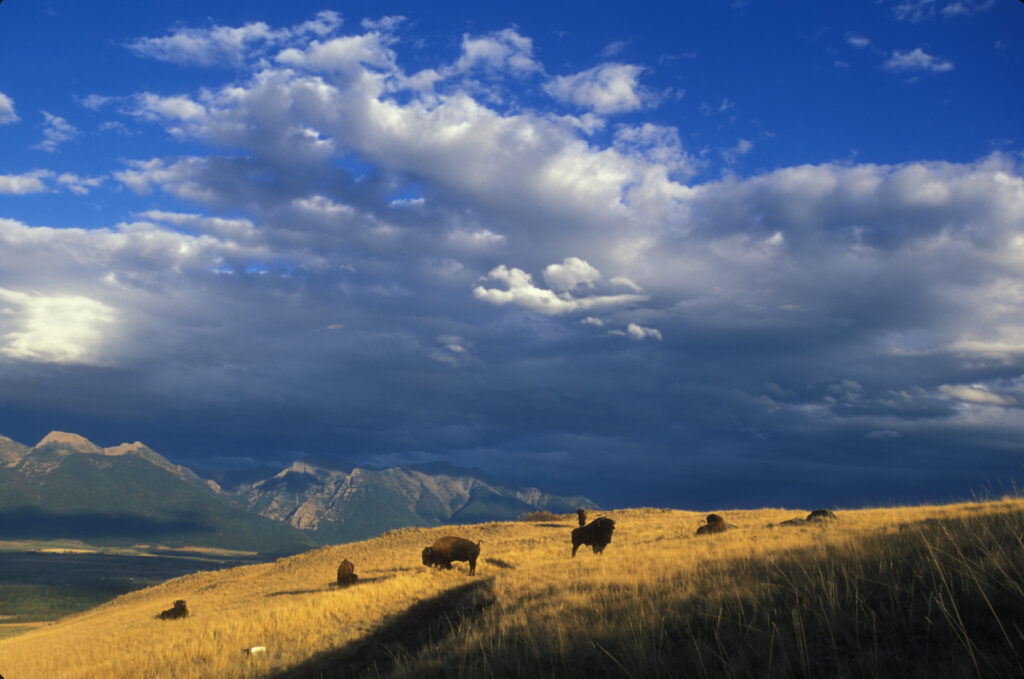This article was originally published in the Bozeman Daily Chronicle.
A proposal by Sen. Steve Daines to transfer the National Bison Range—18,800 acres—to the Confederated Salish and Kootenai Tribes (CSKT) has run into opposition on the grounds that it is simply another part of the Republican Party’s federal land “give away” program. Such claims are nonsense.
Last year Congress passed an omnibus bill with bipartisan support making it almost impossible to divest of federal lands. Ronald Reagan proposed selling off 40 million acres, but his interior secretary, James Watt, never supported the idea, and only a few hundred acres were transferred under that administration. President Trump has never endorsed the idea of selling-off public lands, though he has made it clear that more of those lands should be open to multiple use including grazing, energy, mineral development. Moreover, the proposal to transfer the land to the CSKT specifically says the conveyance is “not intended, and shall not be interpreted, to establish a precedent for any other situation regarding federal land, property or facilities.”
It is also important to recognize that a transfer of 18,800 acres to CSKT would still give the federal government management oversight. In fact, all tribal lands are held in trust by the Bureau of Indian Affairs that approves all land use, and the bison range would be no exception.
Daines’ proposal is more of a give-back than a give-way. The National Bison Range at one time was part of the 22 million-acre homeland of the Flathead Indians. Under the Hellgate Treaty of 1855, the Flathead tribes ceded over 20 million acres to the federal government and were left with a 1.3 million-acre reservation. Then in 1908, Teddy Roosevelt created the National Bison Refuge out of tribal grazing land purchased from the CSKT for $807,000 (today’s dollar) or $45 per acre.
Much of the opposition to the transfer comes from Public Employees for Environmental Responsibility (PEER), a group trying to protect its turf and jobs. Its opposition started with a 2016 lawsuit aimed at stopping then interior secretary, Ryan Zinke, from transferring the land to the CSKT. At the time, senior counsel Paula Dinerstein complained that bison management “would be difficult to do if it weren’t part of the refuge system.” In other words, Indians would not know how to manage bison as well as the bureaucrats do. Then, in her next breath, Dinerstein admitted that “The Bison Range has been pretty sorely neglected.”
It is useful to compare CSKT management of their timber lands with that of the U.S. Forest Service. Since taking control of forest management on the Flathead Reservation in 1988, CSKT have earned more than $2 for every $1 spent compared to the U.S. Forest Service simply breaking even. Moreover, CSKT lands had better species and age distribution of trees, making them less prone to wildfires, better wildlife habitat and better water quality.
Each year the federal government spends approximately $1.5 million for management of the National Bison Range. Of course, this is a trivial part of the red ink spilled in Washington, but under CSKT management, the range might even turn a profit as do their timber lands. As law professor and Eastern Shawnee tribal member Robert Miller points out, in his book, “Reservation Capitalism,” “tribes are making profits and creating economic development and jobs from their forests and they are striving to preserve their ecosystems and sustainable growth for years to come.” CSKT might do the same with the National Bison Refuge.
Opposing tribal land management harkens back to the Burke Act of 1906 that locked Indian lands into the trusteeship of the federal government until and unless the government ordains Indians to be “competent and capable.” To this day those words underpin federal Indian law and resource management. Sen. Daines’ effort to transfer the National Bison Range back to Native Americans would be a good first step into expunging that racist notion from our national policies.




